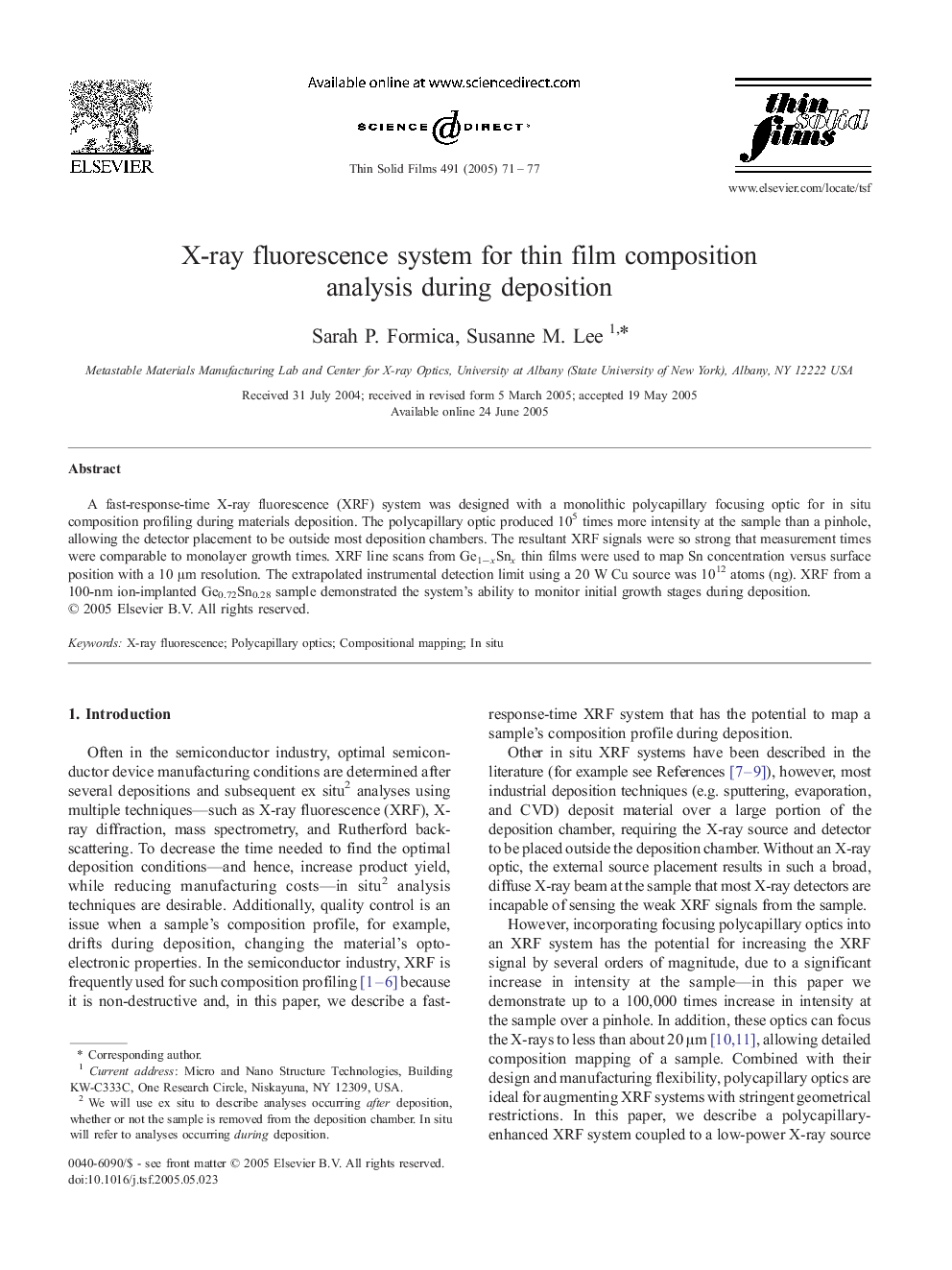| Article ID | Journal | Published Year | Pages | File Type |
|---|---|---|---|---|
| 9812174 | Thin Solid Films | 2005 | 7 Pages |
Abstract
A fast-response-time X-ray fluorescence (XRF) system was designed with a monolithic polycapillary focusing optic for in situ composition profiling during materials deposition. The polycapillary optic produced 105 times more intensity at the sample than a pinhole, allowing the detector placement to be outside most deposition chambers. The resultant XRF signals were so strong that measurement times were comparable to monolayer growth times. XRF line scans from Ge1âxSnx thin films were used to map Sn concentration versus surface position with a 10 μm resolution. The extrapolated instrumental detection limit using a 20 W Cu source was 1012 atoms (ng). XRF from a 100-nm ion-implanted Ge0.72Sn0.28 sample demonstrated the system's ability to monitor initial growth stages during deposition.
Related Topics
Physical Sciences and Engineering
Materials Science
Nanotechnology
Authors
Sarah P. Formica, Susanne M. Lee,
